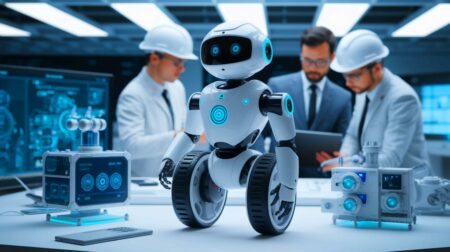Artificial Intelligence (AI) slowly permeates every sector of our modern society, pushing the boundaries of intelligence and securing paradigm-shifting discoveries, mostly due to the prevalent backdrop of self-learning capabilities that have emerged in recent climes.
Over the decades, institutions and governments have invested heavily in security and surveillance infrastructures. However, with the advent of AI-driven products, the landscape of security is transforming quickly. Ranging from improved sensors to cameras with an astounding resolution, and even to highly-efficient processing units, there is no iota of doubt that security professionals –in the wake of advanced technology- are restructuring their teams, engagements, and value.
All thanks to artificial Intelligence
While, for instance, surveillance systems usually engage the use of software-based Video Content Analytics (VCA) in detecting real-time threats and breaches to security measures, the addition of AI and Deep Neural Networks (DNN) to VCA software helps such software to identify and differentiate various objects across a larger number of examples. In turn, these computer-vision algorithms are used to further extract data such as absolute speed, color, area, etc. In sum, the advent of Artificial Intelligence ensures higher accuracy in determining objects.
Usually, VCA provides a certain level of alert to breaches such as left baggage in airports. Motion detection etc. however, the in-accuracy of such videos overshadows the benefits, and some operators go as far as disabling these analytics due to issues such as false alarms.
In the realm of face detection and recognition, AI aids in this critical role of law enforcement agencies. Essentially, Artificial Intelligence aids in the automatic recognition of individuals, and even the re-identification of unknown faces. The use of AI ensures precise face recognition in real-time, using images extracted from videos, external image sources, and even pre-defined watch lists.
AI extracts unique facial features, coding such features into a feature vector, which in turn, represents a specific face. The feature vector is then stored in a database and can be used to compare watch lists on a larger scale and in real-time.
AI technology also aids VCA applications in detecting traffic violations accurately and automatically. Speaking matter-of-factly, AI can be used for cases such as License Plate Detection, Over-Speeding Detection, and even No-Seatbelt or Mobile Usage Detection.
In workplaces, there has been an emergence of new AI-based surveillance tools that can provide employees with a significantly enhanced workplace experience. In essence, AI-based surveillance tools and systems can aid in managing irregular work schedules, through the identification of specific employees needed at specific times and places.
Such AI-based tools can also be used to benefit the workers, such as identifying authorized personnel, guests of the company, etc. which helps to create a seamless entry experience for those that are to be treated with utmost care.
In conclusion, there is no doubt that we have entered a novel era of surveillance, with this new technology ensuring an all-inclusive experience, ensuring seamless experiences with sign-in processes for companies. For security purposes, it significantly reduces the burden on security staff and benefits them by detecting unusual incidents in real-time.
Photo by Tara Winstead from Pexel
Did you like it? 4.4/5 (27)







